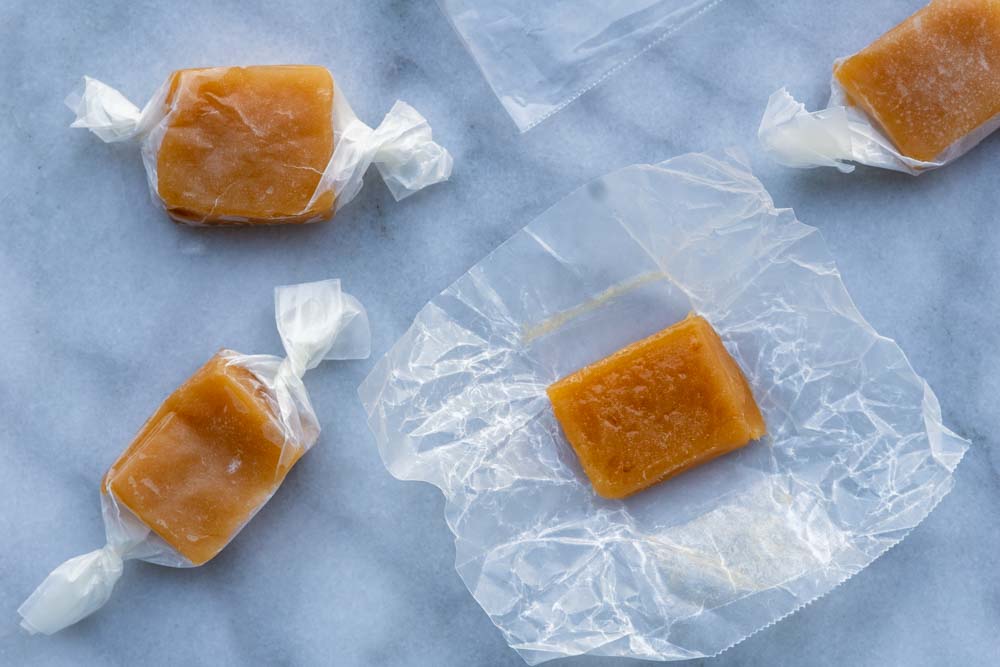Crystalline vs. Non-crystalline candies
Within the candy world there are a lot of ways to group candies. One common way to do so is to group them based on whether they are crystalline or non-crystalline. Crystalline candy contains sugar crystals. The candy makers have allowed the sugar to recrystallize. Non-crystalline candies do not contain sugar crystals.
Why does it matter?
This may seem like a minor difference, but, the presence of sugar crystals has a big impact on the structure and texture of candy. Crystallized sugar makes candy more grainy and fragile whereas non-crystalline candy can be smooth and glassy.
Whether or not you want crystals to form has a direct impact on how you make your candy. If you want sugar to crystallize, you’ll treat the sugar solution very differently than when you do not want it to crystallize. Also, the ingredients and ratio of ingredients you use will be different. We will look at those factors in this week’s lessons.
Candy examples
Examples of crystalline candy are fudge, fondant and rock sugar. Fudge and fondant both have a lot of tiny sugar crystals. They melt in your mouth. Rock sugar on the other hand is made up of one or just a few very large crystals.
A non-crystalline candy does not contain sugar crystals.
Examples of non-crystalline candy are brittle, toffee, most caramels, hard candy, lollipops
To explain the crystallization of sugar, let’s continue where we left off last week.


